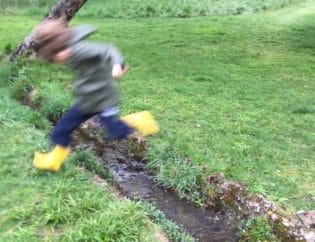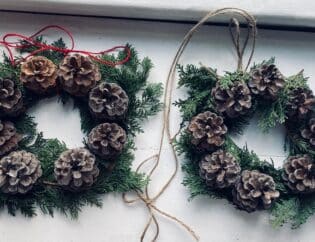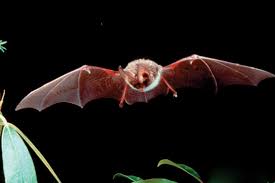
They fall from the sky, capturing our awe— snowflakes. These tiny, beautiful shapes are gifts from the sky that are pure magic to a child.
And they have a lot to teach a child. The next time you see flakes in the sky, help your child understand the what, why, and how of these symmetrical shapes with this guide. Then, head out on a snowflake hunt (with our tips below) to learn more hands-on!
Snowflake Basics
What we call snowflakes are actually balls of snow crystals. In nature, hundreds or even thousands of snow crystals may collide and stick together in mid-air as they fall through the sky, forming flimsy puff-balls we call snowflakes. The word snowflake is actually a more general term that can mean an individual snow crystal or anything that falls from the winter clouds. But it’s ok to call the snow crystal balls snowflakes.
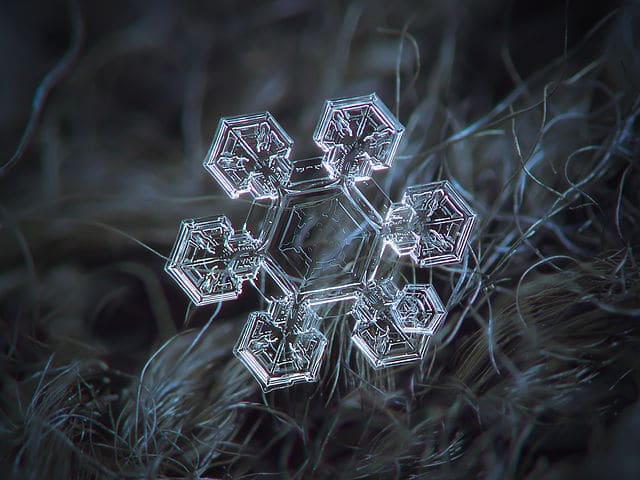
Snowflake Shapes
If you ask your child to draw a snowflake, one shape might come to their mind. But the fact is that no two snowflakes are alike. A quick study of snowflake shape will reveal this magical fact. Each snowflake actually has its own distinctive shape. Each and every one!
What they do share in common shape-wise is that all snowflakes are hexagonal, which means they have six sides. Why is this? This is because a snow crystal begins with the formation of a small hexagonal plate, and then, as the crystal grows larger during its journey to the surface of the earth, branches sprout from the six corners.
Why Snowflakes Form
Snowflakes form in very cold air when water vapor freezes around bits of dust, a pollen grain, or a piece of soot, to form solid crystals that fall to the ground. As it tumbles through the clouds, the crystal experiences ever-changing temperatures and humidities, and each change makes the arms grow a bit differently. So the shape of the final snow crystal is determined by the exact path it took through the clouds. But since the six arms all took the same path and experienced the same changes at the same times, the six arms grow in synchrony and so the shape of the arms is symmetrical.
However, since no two snow crystals follow the exact same path through the clouds as they fall, no two look exactly alike. If you think about it, the cool thing is that each snow crystal is a mini record of the conditions it experienced in the sky as it fell from the clouds, a fleeting one. The truth is that the reason snowflakes change into different shapes at different temperatures is a question that has puzzled scientists for at least 75 years!
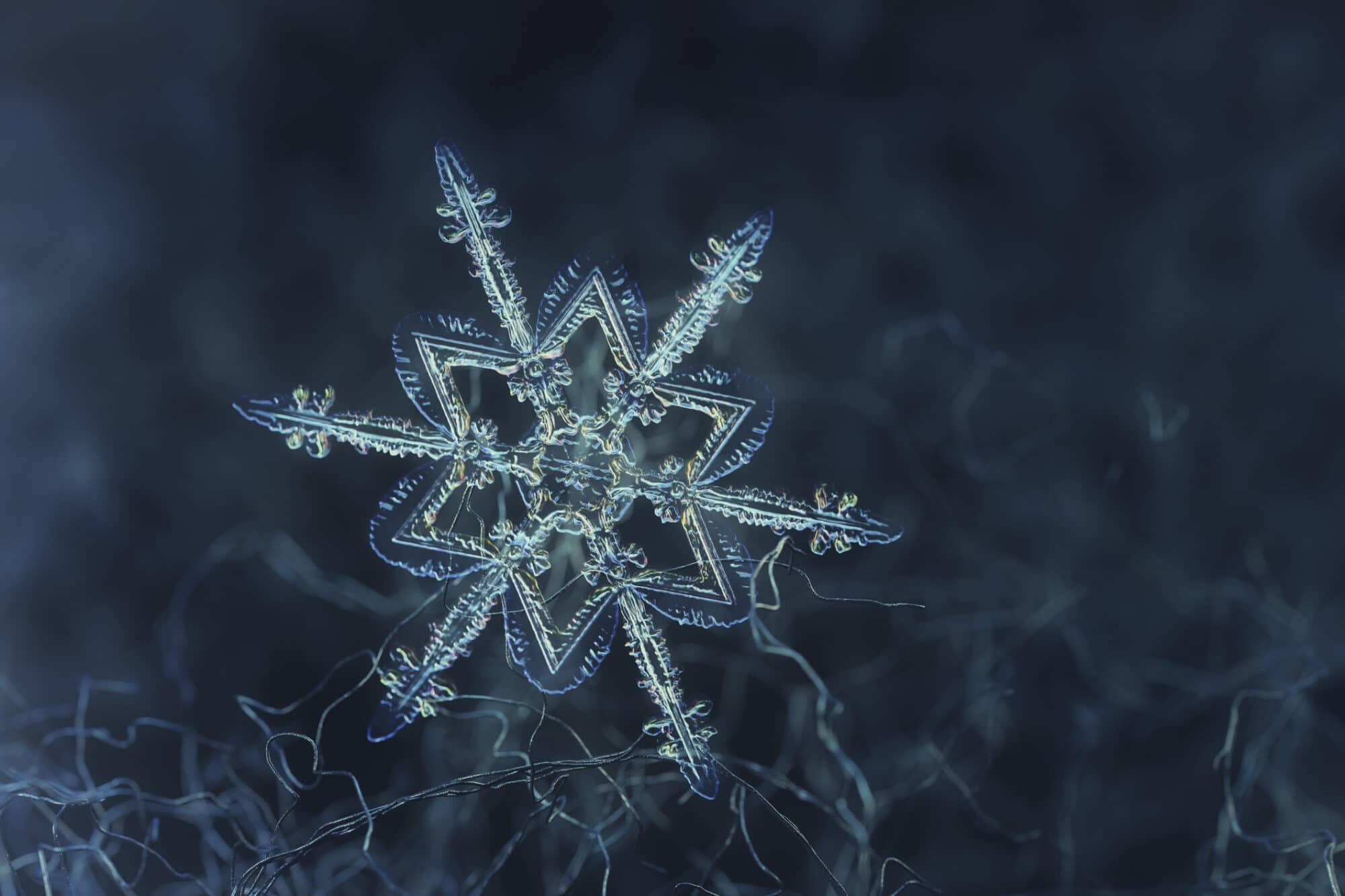
Snowflake Types
Because of the fascinating way they are formed, snowflakes come in an infinite number of shapes. Scientists classify the different shapes. There are Stella crystals, powder crystals, Graupel, hexagonal plates, needle crystals, and column crystals. The chart here lists 35 snowflake types, as seen under a magnifying lens.
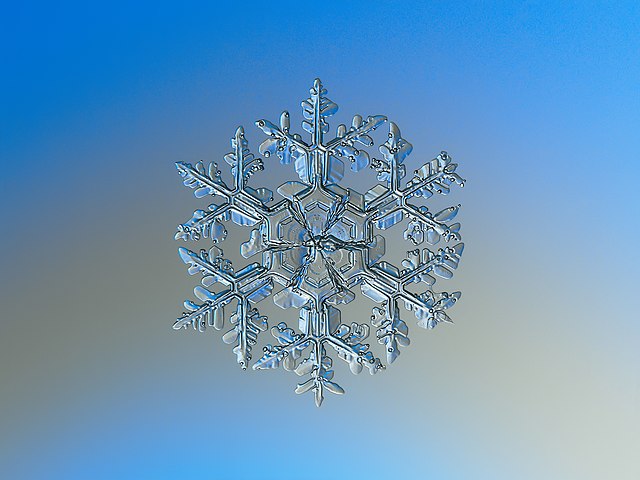
Snowflakes also come in different sizes. The smallest snowflakes are called Diamond Dust crystals, and they might be as small as the diameter of a human hair. The faceted crystals sparkle in the sunlight as they float through the air, which is how they got their name. They are somewhat rare, appearing in bitterly cold weather.
And did you know that the largest snowflakes were recorded in Berlin, Germany during a storm in 1915 that produced 4-inch-wide flakes shaped like oval bowls? In 1970, a fall snowstorm in Laramie, Wyoming dropped 3-inch-wide flakes.
 Learn more about snowflakes and the science of snow with Curious About Snowflakes. The book looks at the science behind snow, and the history of record-setting blizzards and snowstorms—plus how people have fun in the snow!
Learn more about snowflakes and the science of snow with Curious About Snowflakes. The book looks at the science behind snow, and the history of record-setting blizzards and snowstorms—plus how people have fun in the snow!
Head Out on a Snowflake Hunt!
Snowflakes are fascinating ephemeral parts of the natural world. But don't take our word on it. If you are fortunate to live in a cold climate, head outside with your child and learn about the different types of snowflakes around.
When to head out on your snowflake hunt? Cold air with lots of moisture makes for ideal conditions for snowflake growth. Stellar dendrites are excellent flakes to examine. These grow best between 15 degrees and 5 degrees, which makes it a good time to go out and find some really nice snowflakes.
How to capture snowflakes? One way to examine flakes is to catch them on black construction paper or a felted board and look at them outdoors under a magnifying glass. You don’t need anything fancy. Just a small magnifier, about 5X, will do. Try to catch the flakes as they fall. If they hit the ground, their shape will likely be destroyed.
So simply head outside with your tools on a cold day and see what you find!



